What is a magnifying glass made of and how to choose it?
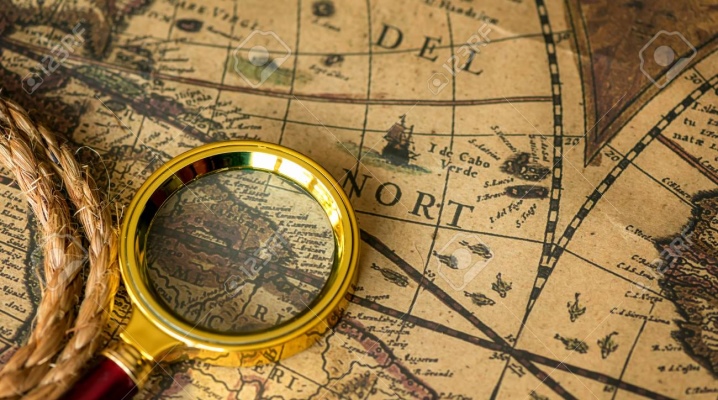
In various fields, one cannot do without such a useful device as magnifier... Used correctly, it can simplify many of the tasks people face. You should take a closer look at this subject and learn how to choose it correctly.
What it is
First of all, it is worth understanding what this useful device is.
A magnifier is an optical system that consists of important components: lenses. There may be only one lens, or there may be several.
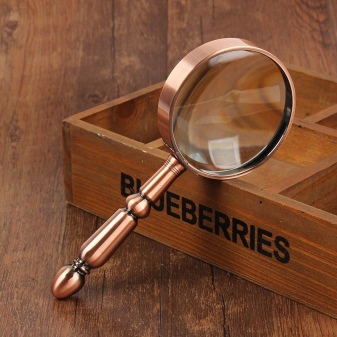

This product is intended for high-quality visual magnification and examination of objects small dimensions.
It would seem that the construction of a magnifying glass is elementary, but this does not negate the fact that this thing turns out to be irreplaceable in many spheres of human activity. These include biology, medicine, banking and jewelry. The magnifying glass is often used by experienced criminologists in their difficult work, where every little thing plays an important role. It is possible to enumerate for a long time all the areas in which the use of a high-quality magnifying glass turns out to be relevant.



History of creation
The definition of a magnifying glass these days is known and understood by many. But few people know how the history of this popular and widespread device, which is used everywhere today, began.
It was created back in 1250. The development of this device is the merit of Roger Bacon. At the time, he was a lecturer at Oxford University. Roger spent a lot of time on a huge number of different experiments with mirrors, which could provide a detailed explanation of the principles of refraction and reflection of rays. In the distant past, Roger was better known as Doctor Mirabilis (Latin for "amazing doctor").
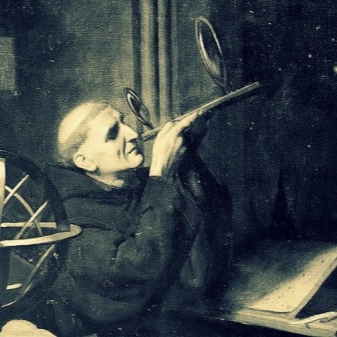

Although it is Bacon who is credited with the first discovery of the properties of a convex lens, optical devices for visual magnification of various objects have been used for many thousands of years. Yet during the time of ancient Egypt, transparent pieces of crystals were often used for the purpose of a clear and detailed examination of small objects. The famous Roman emperor Nero invented another interesting method of using magnifying glasses: he used precious stones to clearly see the actors on a distant stage.



What does it consist of
In the construction of a standard model of a magnifying glass of a hand-held type, the following main components are usually present:
- magnifying glass (meaning a biconvex lens);
- a strong frame that holds it well (most often made of durable plastic, wood or metal);
- handle of medium length.
These are the details of the simplest magnifying device. Similar devices can be found in many retail outlets. They differ little from each other in external performance.
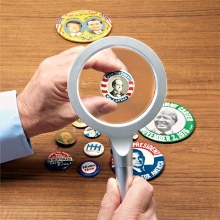


A special tripod model of a modern magnifier should be included in a separate category. This device is more complex in design and operation, which consists of such important elements:
- eyepiece;
- special stage (usually compact);
- tripod;
- mirror.

Today on sale you can find more thoughtful mechanisms with magnifying lenses.
Such products can have a folding structure, additional LED lighting, cables for connecting to the electrical network.
These types of magnifiers are comfortable and ergonomic... They can be used even in very low light, since the built-in backlight easily removes this problem.



For example, the popular magnifying glass model Levenhuk Zeno Desk D7 can be a win-win option not only for work, but also for your favorite activities. This wonderful device consists of the following elements:
- high quality bifocal lens;
- convenient foldable tripod.
This construction is made from optical plasticmaking it both lightweight and reliable.



Species overview
Modern loupes are different. Devices, which belong to different types, have their own distinctive features and operating features. These characteristics must be taken into account when choosing the best model. Let's take a closer look at different types of loupes.
By type of magnification
All types of loops that can be found today are divided by type of magnification.
So, there are models of small, medium or high magnification.
The simplest magnification models are very popular and can demonstrate low magnification. The main feature that distinguishes these devices is their compact size. It can even be a small pocket model, which is very convenient to carry with you if necessary.
In use, these products are as simple and understandable as possible. Low magnification compact magnifiers are perfect for magnifying small objects. Often, these devices are used not only in domestic conditions, but also in a number of professional areas. In most cases, instances are used that magnify the image by no more than 5 times.



No less popular are products related to medium magnification categories. These devices are often referred to as universal, since their use can be addressed in a variety of cases. These are convenient and compact devices that do not require special knowledge in the operation of such devices.
Using a magnifying glass of medium magnification, it will be possible to examine and study small objects in the smallest detail, which are often very difficult to catch with the human eye. It makes sense to operate devices of this type when it comes to carrying out specific work. For household purposes, such magnifiers are also quite suitable. They are able to enlarge the image more than 6 times.


The most powerful and practical are high-quality high magnification magnifiers.
This is the most convenient and practical type of instrument, with which the types described above cannot be compared in terms of power level.
Most often, high-quality devices of this type are used in their work by professional watchmakers or jewelers. And also powerful magnifiers are a frequent choice of keen collectors and users who have to deal with very small details / texts.

Magnifiers of a large degree of magnification are in demand and relevant among professionals, whose work is associated with the maximum accuracy and thoroughness of each stage of action.
With the help of such practical devices, people are able to enlarge the image by more than 10 times, which is a very good indicator.



By appointment
Loops are not only split by the magnification of the image, but also by direct purpose and purposes for which they are used. Let's see what are the different models of loops that perform different functions.
A specific device is distinguished by a special dissecting magnifier. It is perfect for working with very fine details.

HIt is often this model that is acquired for examining and preparing various kinds of natural objects. For such purposes, a powerful device is used that magnifies the image by more than 10 times. Instances are very clear. The main components of a dissecting loupe are:
- stable horseshoe-shaped leg;
- column mounted on a leg;
- bracket attached to the upper edge of the column;
- a dense glass plate that is inserted into the grooves of the bracket.
Thanks to such a well-thought-out device, users have the opportunity to change the position of the lens and stageto make the use of the device as convenient as possible. The user can easily view objects under a magnifying glass fixed at any angle convenient for him (subject to a relatively small distance).




A simple stationery magnifier can be inexpensive. Such a device is sold in many retail outlets.
She can be very small, foldingto make it easier to carry with you to school. Many of these devices are made by Chinese manufacturers. Stationery magnifiers rarely boast a high degree of magnification. Most often these are the simplest models, which are usually not needed in professional fields of activity.
Devices of another category should be of high quality: those designed specifically for numismatists. Such users cannot do without a magnifying glass. Without adaptation, the numismatist simply will not be able to properly discern all the patterns and numerals on the faces of minted coins, because it is precisely the smooth edges that refer to the most obvious sign of a counterfeit specimen.
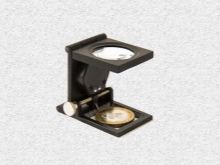

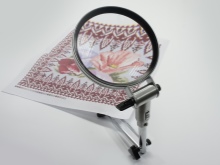
In medicine, industry, repair of household appliances, they are actively used binocular loupes... Often, these types of devices are also used in domestic conditions, for example, for needlework.

The device of a binocular loupe largely depends on its type.
The most popular and in demand are the ones that are designed to be installed on the table. And also the options that are worn on the user's head are relevant. Both types of loops free the hands of a person, and he can do certain work without unnecessary obstacles. Due to this, it is possible to achieve maximum image accuracy, while the eyes get tired much less.
Binocular lenses can be adjusted to fit the user's head circumference. In many instances, backlighting is provided. Often binocular devices are equipped with additional lenses, due to which the increase can be markedly changed.


In popular desktop models, in most cases, the lens is inserted into a light, round plastic case.... It can be supported on a comfortable leg that can be bent if necessary. Most often, binocular magnifiers, used in many areas, have a small mass. They are lightweight and very easy to use. Some models have a special baffle on the lens, which sometimes provokes excessive eye fatigue of the user.

A modern viewing magnifier designed for reading poorly recognized small print text, small images and drawings is considered very comfortable and of high quality.
The main feature of these devices is that they equipped with the most comfortable grip and frame of the lens itself... In application, these varieties can be considered universal... They are used not only in everyday life, but also on the road.


High-quality products are very popular today textile magnifiers. Despite their name, they can be used not only in the textile industry, but also in other areas. For example, with the use of such a device, professional craftsmen can detect damage on a particular woven material, determine the degree of its density.
No less in demand are high-quality grain magnifiers. In most cases, they are used when a scrupulous and careful selection of seeds is required. Such a device is perfect for reliably determining which variety certain seeds belong to. Often, it is the grain magnifier that is used for particularly important determination of the safety or contamination of grain. A distinctive characteristic of the device in question is the presence of a special rim in the design.


A separate category includes modern magnifiers equipped with a Fresnel lens... It consists of a set of concentric rings of small thickness, adjacent to each other. The cross section of each ring has a triangular structure. There are many quality loupes available today with this lens. Many of them are small (about the size of a booklet).
It is worth getting to know the loupes specially designed for the visually impaired. Often these are convenient electronic versions of devices that work thanks to a special application. Due to the magnifying glasses of these models, the life of people with disabilities can be greatly facilitated.


How to choose
Choosing a suitable magnifying glass that will not bring disappointment to its owner should be competently and deliberately. Let's consider what criteria the buyer should start from when choosing the optimal device.

- The first thing a buyer should do is to decide for what purpose he will use the device.... Different models of loops are suitable for solving different tasks. For example, a cheap clerical model does not provide such detailed data as, for example, a dissection one.
- note to the magnification level of the device. For ordinary purposes, for example, for study or use in a domestic environment, equipment with minimal parameters is enough. If you are planning to use the magnifier for more serious professional purposes, it is better to give preference to specimens of medium or high magnification. These are more practical and effective devices, thanks to which it is possible to see even the smallest details.
- pay attention to the functionality of the selected magnifier. Today, devices with a folding design and additional illumination are very popular. Using these devices is both convenient and safe. Such attachments are ideal for working even in darkened rooms and confined spaces.
- You should immediately determine which device size is most suitable for you. If this is a stationary unit, you need to have free space on the desktop - the unit should easily fit here, without interfering with other objects. If you need a portable, easily transportable option, then it makes sense to look for a compact product. These magnifiers are sold in most stores, and many of them are made in pocket size.
- It is recommended to select loupes that are made of practical and durable materials. The most popular and frequently encountered products are those with handles and frames made of plastic, wood or metal. These materials are designed for a long service life. They are difficult to damage or break.
- Make sure you are comfortable using the magnifier of your choice. Hold the device in your hands, try using it in a store, if possible. The grip should fit well in the palm of your hand or between your fingers. If the handle seemed to you too short, unstable, then it makes sense to look at another model. Otherwise, you will not be comfortable using this magnifier.
- Take the time to check the condition of the product, which you chose before going with him to the checkout. The product must be intact, without any damage (no cracks, chips, scratches on the lenses, loose elements, loose fasteners). The lenses should be free of scuffs and any other defects.
- It is highly recommended that you select models from well-known large manufacturers. There are a lot of them on the modern market. Branded products, even the simplest and most concise, can last much longer and not disappoint the user with poor quality. The original brand magnifier will be assembled conscientiously without damage or defects. Typically, these products are sold in insulated packages.
- If you are buying professional equipment for more serious purposes, there is no point in looking for cheap products, which are designed for a short service life. In this case, it is better to overpay, but buy the highest quality and practical device that will not cause any trouble.
- For the purchase of a high-quality and durable magnifier, it is recommended to go to specialized stores.... This is especially true when you are looking for the optimal model for scientific work, watchmaking or jewelry. In this case, a regular office magnifier will not be enough. It is advisable to find a high quality and comfortable model that will give the sharpest magnification and which will facilitate complex professional activities.




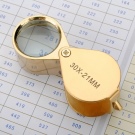

How to choose a suitable magnifier is described in the video below.













The comment was sent successfully.